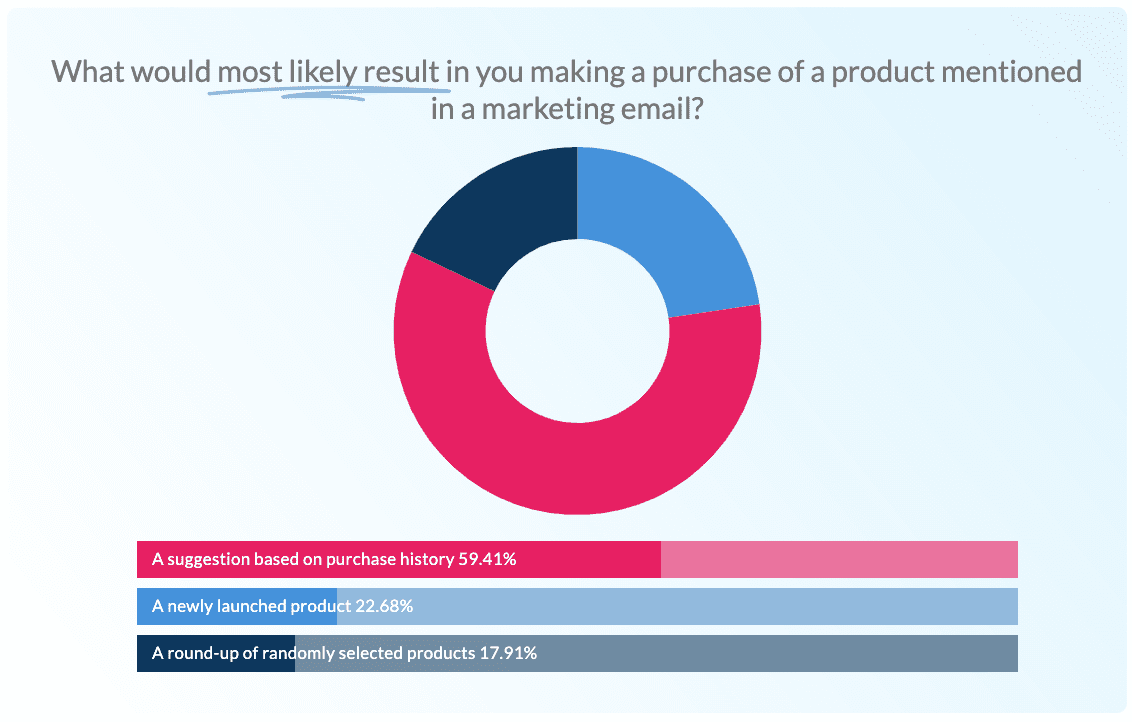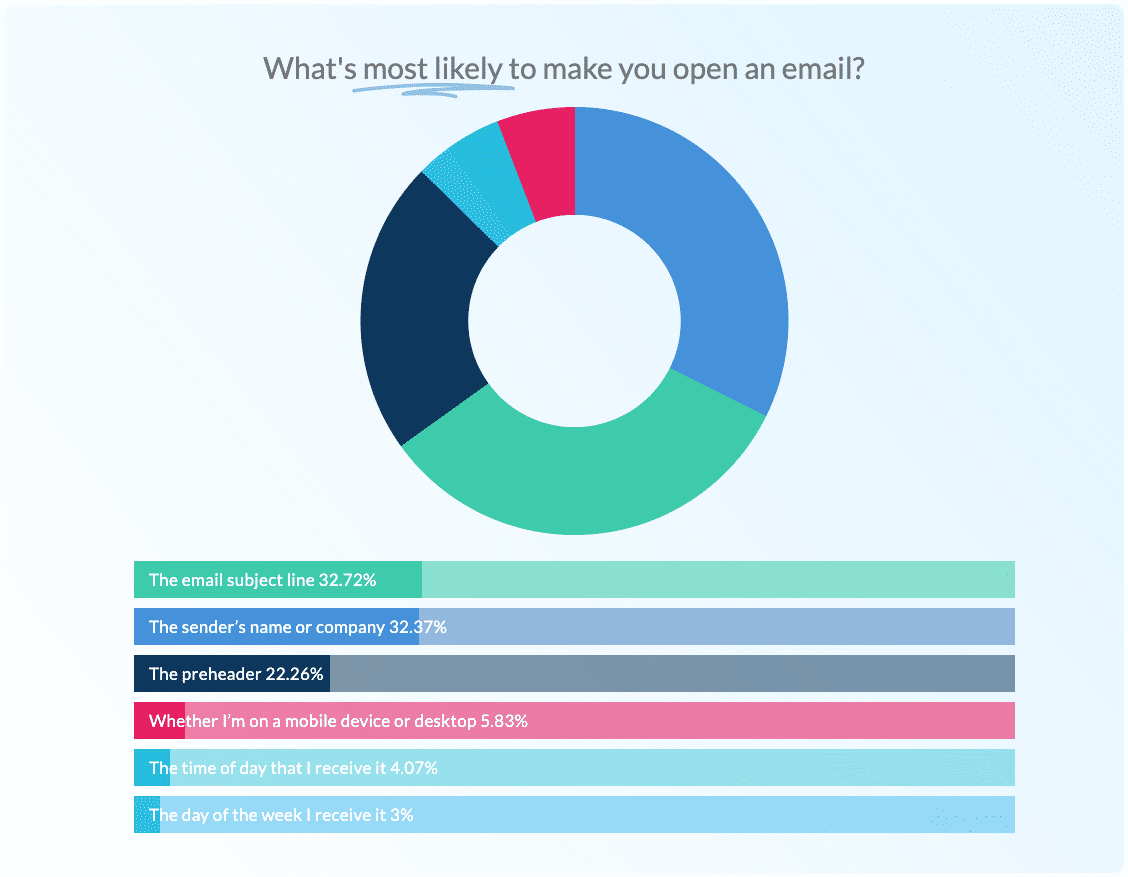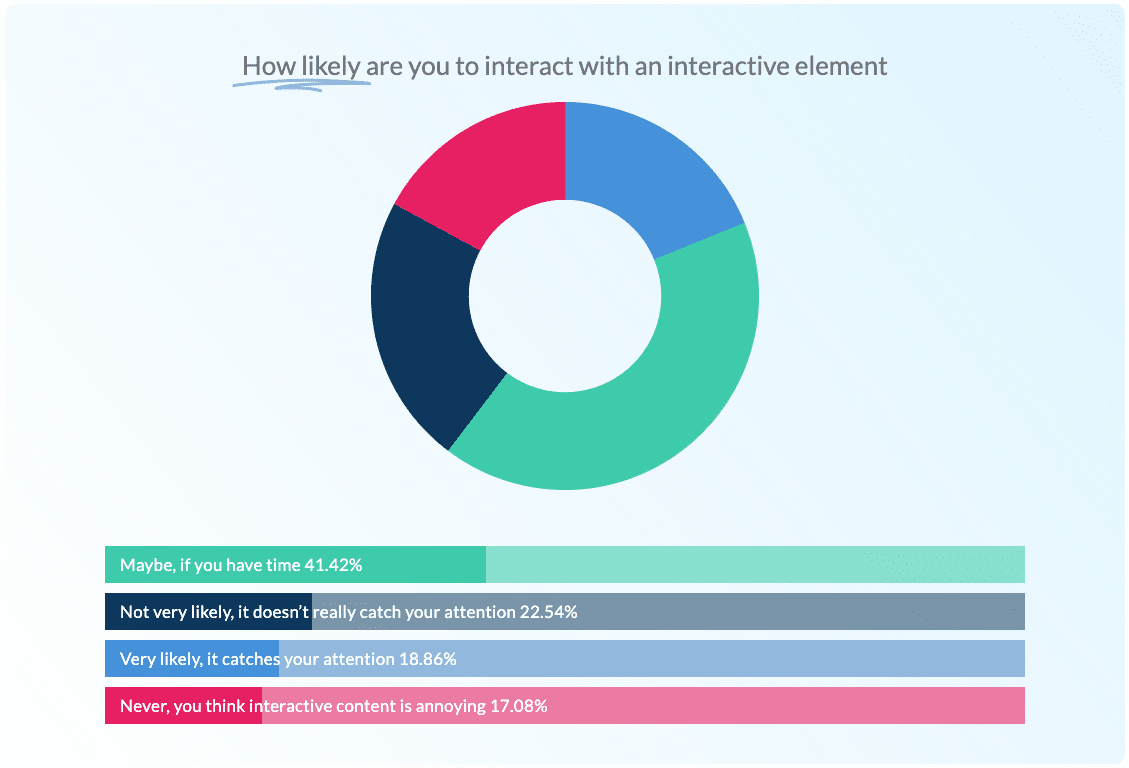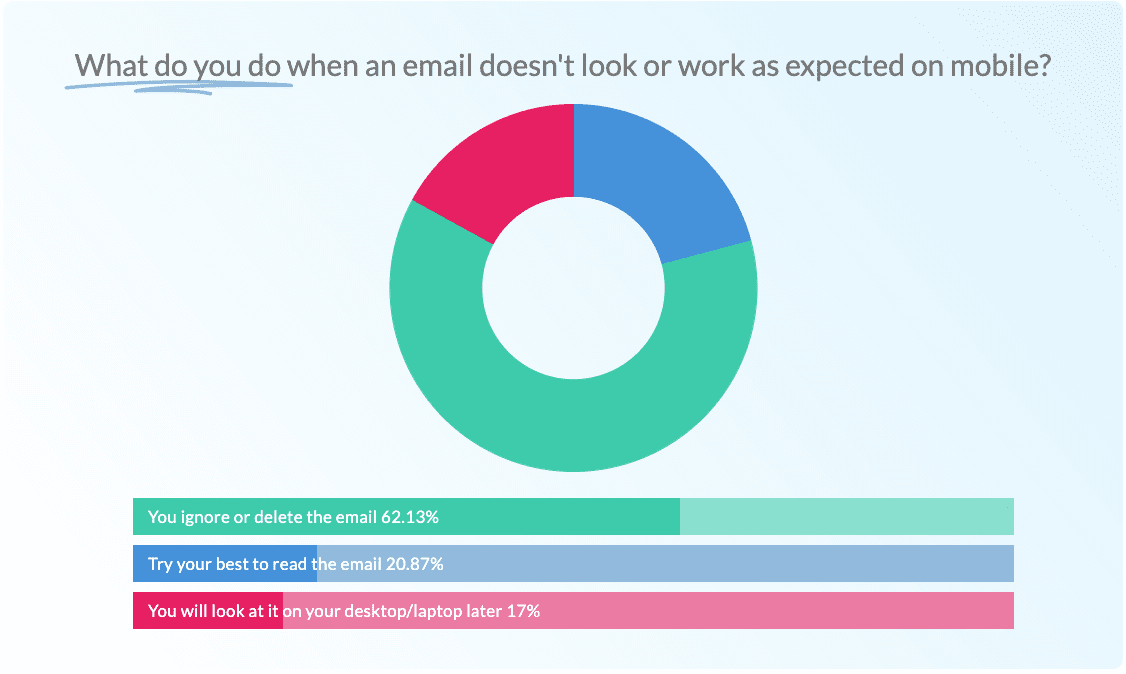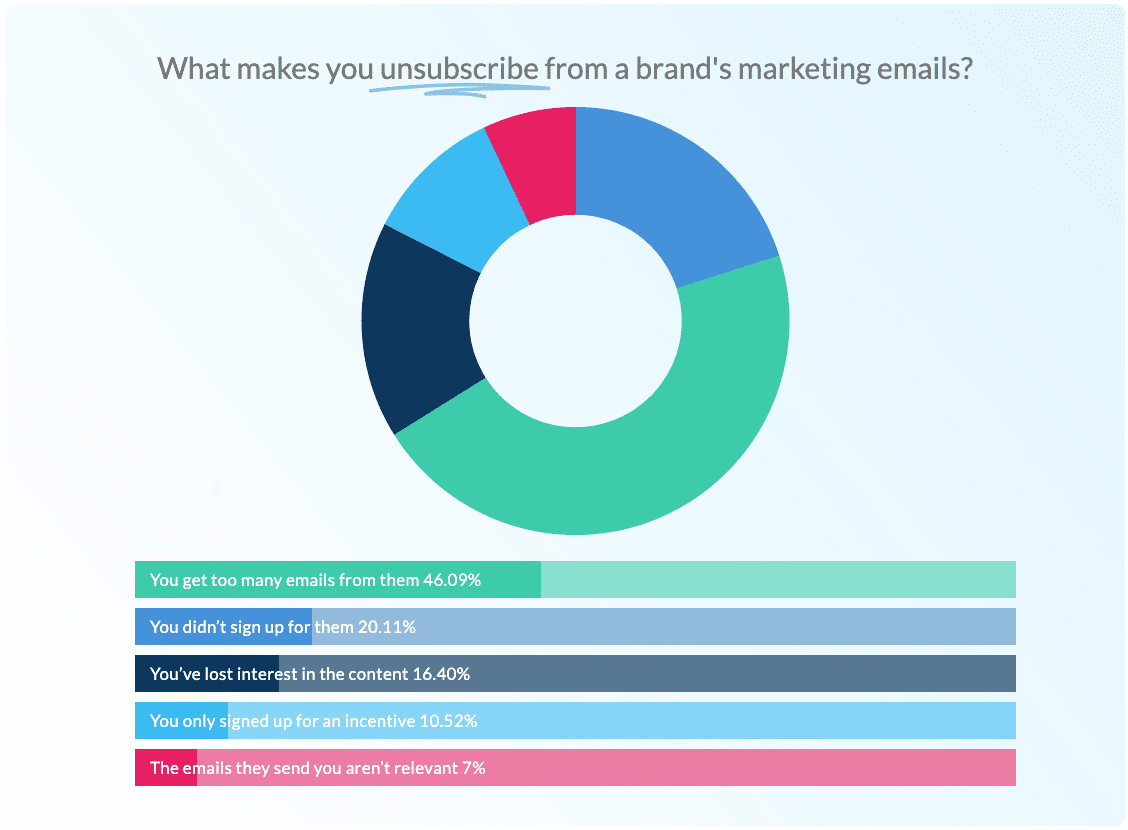
Report Highlights

Consumers want and expect even more personalized email experiences
While 69.5% of emails are already personalized beyond first name, we were surprised to find that 22.2% of people think the preheader text is the most important motivator for them to click through. Approximately 41% are more likely to buy if they are shown a newly launched product or a randomly selected round-up of products, which interestingly doesn’t include any personalization. Learn more

Trusted companies will stand out amongst their competitors
As expected, the consumer’s perception of a company’s brand quality, service, and previous experience are key trust builders. But what really stands out is a brand’s commitment to global issues — an unexpected yet ethical trust win is given to brands that fully embrace corporate social responsibility, which is almost twice as important to consumers as brands that share information relevant to their jobs. Learn More

Interactive email is a major opportunity for brands to stand out
What was really surprising was that relatively few consumers encountered interactive elements in email, despite living in a highly interactive digital age. A full one third didn’t get any interactive elements at all! Learn More

Accessible, readable email design is crucial for success, especially on mobile
62% of recipients will delete or ignore an email if it’s difficult to read on their phone due to not being mobile responsive. Worse, more than 80% receive emails that sometimes or always include broken images, unreadable text, or too much scrolling. Learn More

It’s simpler than you think to fix high unsubscribe rates
Getting bogged down by too much email frustrates consumers. Sixty percent think their inboxes get flooded by email, and 46% will unsubscribe because of it. Send fewer emails and lower your unsubscribe rate. Learn More
About This Report
We commissioned an online survey of 1,424 adults via SurveyMonkey, using a gender and age-normalized panel. The results reflect a representative sample of the United States. More information about SurveyMonkey’s methodology is available here.
The state of email marketing looks very different than it did five years ago. Companies and businesses have moved from impersonal, mass emails to more personalized tactics to create deeper audience engagement, increase revenue, and build brand trust. Looking at the numbers, it’s easy to understand why brands are taking email marketing very seriously: a 2019 DMA study found the average ROI on email marketing an incredible $42 per $1 spent! That’s a jump up of 10% from 2018.
This report aims to provide insight on current and future trends in email. The intention is to educate email marketers on where to focus their time to over-deliver on their email experience. The inbox is precious real estate — it’s competitive and fragile. Email marketers need to know how to communicate to maximize engagement, brand trust, and revenue.
Part 1: Personalization
 Connecting and engaging with customers is vital now more than ever to hook and retain them. When businesses don't invest in creating a stellar email experience, they’re leaving money on the table. As such, marketers have embraced personalization with gusto. Although advanced personalization is still relatively new, approximately 70% of emails received are personalized beyond sender’s name and subject line.
Connecting and engaging with customers is vital now more than ever to hook and retain them. When businesses don't invest in creating a stellar email experience, they’re leaving money on the table. As such, marketers have embraced personalization with gusto. Although advanced personalization is still relatively new, approximately 70% of emails received are personalized beyond sender’s name and subject line.
Part of the hook is the preheader text, the first line of text you see after the subject line before you open the email. A whopping 22% of people told us the preheader text is the most important motivator for them to click through. Does this surprise you? It surprised us. Most of us believed that the subject line and sender name had the biggest impact on open rates.
While that is true, it means that we are more likely to neglect the preheader text. This is because we think it won’t make much of a difference to our email performance. However, 22% is still a large number by all accounts. By putting a little more thought into the preheader text, you could increase your open rates significantly.
Other data points like date and time of send are less important in our 24/7 world. When we think about when to send an email, we should remember that it’s about when someone decides to open their email app, rendering email timing less important. This rings especially true when interactive elements such as AMP for Email come into play. AMP automatically updates information — such as job listings from Indeed — when a recipient decides to open the email, so that they won’t see any postings that were closed between when the email was sent, and when the recipient opened the email.
Finally, 41% of respondents said they would buy a product if it was newly released or in a round-up of available products. This powerful stat indicates that companies should strive to use a combination of tactics in emails to increase sales. Clearly, new product launches, personalized recommendations, product round-ups and a healthy dose of personalization highly influence a customer’s decision whether or not to buy. And, as expected, product recommendations based on previous purchases get top marks.
Part 2: Trust
 It’s not surprising that consumers return to brands they feel good about — and recommend them to others. Sixty-seven percent of respondents cited they trusted a brand more if they had a good experience with a product or service. And, while great customer service can sometimes mean refunds and a hassle for businesses, those that make refunds fast and easy and strive to ‘make things right’ for customers will earn even more loyalty. That kind of genuine loyalty and trust in a brand is a powerful motivator in customers’ decision-making.
It’s not surprising that consumers return to brands they feel good about — and recommend them to others. Sixty-seven percent of respondents cited they trusted a brand more if they had a good experience with a product or service. And, while great customer service can sometimes mean refunds and a hassle for businesses, those that make refunds fast and easy and strive to ‘make things right’ for customers will earn even more loyalty. That kind of genuine loyalty and trust in a brand is a powerful motivator in customers’ decision-making.
Globally-conscious brands take it a step further. Corporate social responsibilities (CSR) such as charitable giving, progressive environmental policies, and reducing carbon footprint are top motivators for trust among consumers. By embracing CSR policies, brands get a 50% higher trust rating than those who send information relevant to the consumer.
This requirement of ethics over personal gain can be amplified even further. A separate study of US internet users shows that 53% of consumers think a brand should advocate for at least one social issue. Additionally, a Nielsen study reports that 85% of millennials say it is extremely or very important that companies implement environmentally-conscious programs.
All told, a powerful mix of excellent customer service, a kick-ass product, and a genuine commitment to global issues are what it takes for brands to win their audience’s trust and respect.
Part 3: Interactivity
 Interactivity represents a huge — and largely untapped — opportunity for savvy email marketers. Our survey results tell us that 60% of people are likely to engage with an interactive email. And, more than 50% say they like it when they can interact with content right inside the email. That’s a considerable amount of consumers who are just waiting for amazing, easy-to-use (and fun!) emails that they can engage with.
Interactivity represents a huge — and largely untapped — opportunity for savvy email marketers. Our survey results tell us that 60% of people are likely to engage with an interactive email. And, more than 50% say they like it when they can interact with content right inside the email. That’s a considerable amount of consumers who are just waiting for amazing, easy-to-use (and fun!) emails that they can engage with.
Despite the consumer's clear interest in interactive design, a shocking 33% of respondents don’t see any interactive elements in their email. This means they aren’t even seeing a form, or video — a few of the easiest components to integrate into an email.
Games and animation remain sticking points as well: a full 86% of people don’t see animation in emails. This represents a huge opportunity for brands to embrace interactivity — even if it’s at a basic level — to stand out from the competition. Introduce sophisticated elements such as animation or try dynamic AMP for email elements and you’ll be golden.
However, keep your audience in mind: 27% of people surveyed don’t always understand how to interact with interactive content. Make it easy, intuitive, engaging, and personal to hook potential customers and retain your loyal base.
Part 4: Readability (Mobile Responsive)
 Sending clever, interactive, and highly scannable emails is a powerful tactic. However, companies seem to be missing a basic point: they must be readable on any device. A worrying 20% of respondents say that the emails they receive are broken or not presentable on mobile devices. How is this still happening?
Sending clever, interactive, and highly scannable emails is a powerful tactic. However, companies seem to be missing a basic point: they must be readable on any device. A worrying 20% of respondents say that the emails they receive are broken or not presentable on mobile devices. How is this still happening?
It’s 2020 — practically everyone has a smartphone and 40% of online transactions are on mobile. There’s simply no excuse for poor design and a bad mobile experience could hurt your bottom line.
In fact, a sizable survey result shows 60% of people will delete or ignore an email if it’s difficult to read on their phone due to not being mobile responsive. That’s extremely concerning, as nearly half of mobile users will switch to a competitor after a bad mobile experience. No one wants that!
Part 5: Unsubscribe
 The days of ‘spray and pray’ are gone… right? Not quite. When surveyed on the current volume of emails received, 58% of respondents think they are still getting too many emails. We also see that 20% of people still have to unsubscribe from email communication they didn’t sign up for in the first place.
The days of ‘spray and pray’ are gone… right? Not quite. When surveyed on the current volume of emails received, 58% of respondents think they are still getting too many emails. We also see that 20% of people still have to unsubscribe from email communication they didn’t sign up for in the first place.
Unfortunately, the days of buying lists of names and using an opt-out approach aren’t over — but they should be! On the flip side, opt-in open rates can be as high as 28% for certain industries, with an overall 22.15% open rate across all industries in 2019. So it’s pretty clear that the opt-in approach is a better tactic for consumers if you want to play the long game.
Excessive emails equals excessive unsubscribe rates: 46% of respondents said they will unsubscribe if they receive too many emails from one company. We’ve all been there, right? It’s super frustrating. It requires a fine balance to optimize the end result you hope to achieve, while also keeping your unsubscribe rate in check. You don’t want to scare off good prospects by flooding their inbox.
And then there are the annoying emails. Although 10% polled say that they signed up because of an incentive offer, they’re likely to unsubscribe due to disinterest. The more you badger customers with random messages that don’t target their needs, the more likely they will unsubscribe.
Some companies let consumers fine-tune their content to what interests them most, like upcoming sales or their favorite brands. Making personalized tweaks to a templated email for the 90% still signed up can cut down on time for you, rather than having to start from scratch every time. Plus, the personalized touch can help to increase customer retention.
The Future of Email Marketing is at Your Fingertips (Literally)
The five important takeaways from this survey — personalization, trust, interactivity, readability and unsubscribes — highlight the current state of where email marketing is and where it’s going. Clearly, email marketers need to leverage this data in order to attract, impress and even delight potential (and existing) customers. When they do, they will be well-compensated with increased customer engagement, brand loyalty, and revenue.
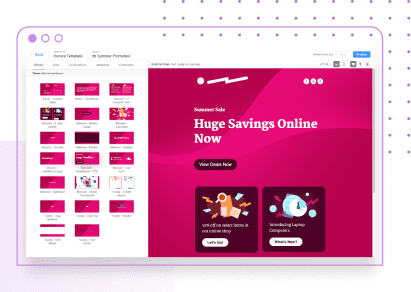
About Dyspatch
Dyspatch is an email campaign platform that makes it simple to build sophisticated and highly personalized emails without custom code. Simply pick your template, select the theme and start using its intuitive drag-and-drop interface to create engaging interactive email experiences. Visit us to discover how easy it is to make effective email campaigns or to request a demo.
